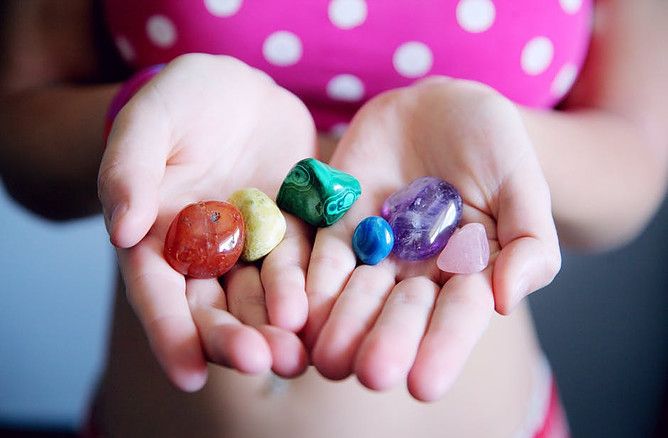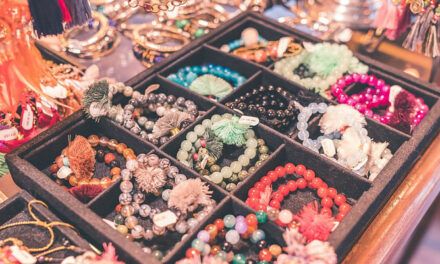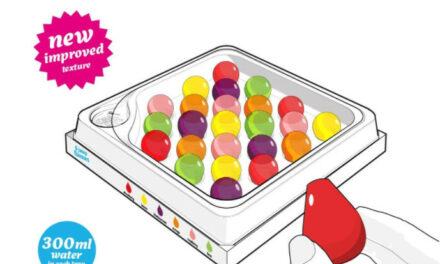Gemstones have been around for ages. Names like rubies, sapphire, emerald, diamonds have been used to identify these gemstones across generations. You may have come across them as jewellery through a family heirloom. When you are trying to buy an engagement or wedding ring for your intended spouse. But, have you ever heard about the best gemstones for anxiety and depression?
Yes, gemstones are known and appreciated for their beauty. However, apart from their beauty, gemstones have been associated with various powers. Some say they can heal, can give you strength during battle or even have the ability to transport you to another realm. And, some even believe gemstone can help you manage anxiety and depression.
In this post, we will learn the details about a gemstone and if it can lift or heal anxiety or depression.
Hang on! But, before anything complex, let’s define gemstones first.
What are Gemstones?
Gemstones are mineral crystals, rocks and organic materials that are known for their beauty, durability, rarity. Thanks to that ‘attraction’ and rarity, they are cut, polished and used for jewelry or other uses.
Surprised that rocks and organic materials were included in that definition? Well don’t be, not all rocks and definitely not all organic material are considered as gemstones.
Examples of rocks considered as gemstones are lapis lazuli, Opal etc. Also, for organic materials, we have Amber, Pearl etc.
The beauty of gemstones can not be unrivaled. That’s why they have been used for jewelries and some other uses.
Owning anyone of them is a sign of wealth and prestige. Therefore, since ancient times till now, they have instigated various conflicts, theft and sometimes even wars!
Difference Between Gemstones and Crystals
Gemstones and crystals are names that are often used interchangeably in jewellery making and in other fields. Unfortunately, they can be used in cases where their reference there can be plain wrong.
Here is where their difference lies.
➢ Not all gemstones are physically arranged in a particular geometrical order or magnitude. In contrast, the crystals, the atoms, ions, molecules, which they are composed of, are arranged in a regular geometric pattern.
➢ Therefore, gemstones can be crystals (for, e.g. sapphire, ruby) and can be organic minerals (for e.g. lapis lazuli, pearl and coral) too but not all crystals are gems.
➢ In terms of value, gemstones are chosen mainly because they are beautiful, rare and durable. While not all crystals are particularly beautiful, for example, the salt, we use for cooking or even rare or durable.
➢ Different gems have various properties as also would crystals have different composition and properties.
So yes, I hope the differences outlined above clears up the cloud of confusion over these two names.
Tip: Did you know Chinen salt, which is also crystals, are a better option in managing high blood pressure and diabetes, compared with regular table salts?
Now, let’s look at different types of gemstones.
What are the Types of Gemstones?
There are many types or varieties of gemstones. With about 2000-3000 gemstones in existence, only around 100 gemstones end up to be used as jewelry etc.
However, the gemstones are broadly classified into 3 types.

➢ Precious stones
Examples of gemstones that are often referred to as precious stones are ruby, emerald, diamonds and sapphire.
They are referred to as “precious” maybe because of their lustre and clarity.
Though this classification often erroneously implies the fact that these stones are more expensive than others which are not usually so.
➢ Semi-precious stones
These stones include all other gemstones including opals, corals, topaz, amethyst, Jet, Lapis Lazuli, tiger eye, moonstone, pearls, jade, rose quartz and countless others.
Some of these stones are made from organic material or deposits like the pearl, coral, amber etc. while some other which are rocks are lapis lazuli etc.
➢ Counterfeit gemstones
These are gemstones that are made in the laboratory. They are made to look like the original gemstones and sometimes are often slightly lesser in value.
These synthetic gemstones can be detected through the presence of bubbles. If these ‘bubbles’ are much, they can give the gemstones a cloudy appearance, especially if the original gemstones that they are meant to imitate are clear.
Some people are aware, and they deliberately set out to buy these synthetic gemstones. Maybe because they don’t have a lot of money or don’t want to spend much.
Unfortunately, many others are cheated of their money when they deliberately set out to buy the original gemstones but are sold the synthetic gemstones instead.
Note that apart from the presence of bubbles in the synthetic gemstone, they are often brighter than the original gemstones. Though with the same chemical and physical properties.

Tip: Did you know that some gemstone companies make Stress & Anxiety Relieving Bracelets?
The natural process of gemstone creation best can be understood by learning how gems are formed and how they end up in a store or with a dealer.
How are Gemstones Formed?
There are many ways in which gemstones can form.
Minerals, which make up the earth’s foundation may interact with water below the earth and dissolve. After the evaporation of cooling of water, the gemstones emerge.
Some form when water interacts with rocks containing copper to form gemstones.
Also, when mollusks like oyster farm pearls.
You might be surprised to know that some form from tree resins like amber.
Cutting and Polishing Gemstones
Do you admire the glittering, well-shaped or smooth texture of a gemstone? I do too. These features are not seen or less in the rough form of these gemstones. Therefore, to achieve these features, especially for jewelry making, they are cut, polished and also color enhanced.
This process of cutting and polishing gemstones is commonly known by the industry as lapidary or gem cutting. Also, the individual who does this job is known as Gem Cutters or Lapidary (lapidarist).
There are various ways in which gemstones are cut and polished. The most popular being:
- tumbling,
- cabochon, and
- faceting.
1. Tumbling method
In a tumbling method, the gemstone together with grit (maybe coarse or fine diamond pieces or other material) and water or oil are placed inside a cylinder.
The cylinder is rotated along its long axis. This results in gemstones which are polished but are irregular in shape. However, this method is not used much in the modern-day.
2. Cabochon method
With cabochon method gemstones cutting usually result in a rounded top and a flat bottom or underside.
The gemstones that are cut using this method are usually the opaque, transparent and some translucent ones, with some transparent ones.
3. Faceting method
In the faceting method, the gemstones that use this method are the transparent ones like diamonds, rubies etc.
Faceting involves cutting the gem in varying angles that will maximize reflected light. For proper faceting, the optical properties and crystal structure of each gemstone need to be understood. Unfortunately, this method warrants wasting of the gem in a bid to achieve better results.
This method is the one used more in recent times. There are also forms of facetting, which are:
- The brilliant-cut,
- The rose cut,
- The step cut, and
- The drop cut.

Tip: HealthyLine Hot Stone Therapy uses gemstones, which help with pain relief and promote circulation.
Valuation and Grading of Gemstones
The value of gemstones, as you may know, depends on various factors, which are:
- clarity,
- color,
- cut etc.
These factors including, carat, are majorly used in valuing colorless diamonds before they were modified to encompass other gemstones of color.
Colorless Diamonds with “fire” that is much sparkle, clear and cut well are valued more while for colored gemstones, the determining factors are:
- purity,
- coloring,
- asteria (the act of exhibiting star-like effect on reflection),
- chatoyance,
- pattern,
- color zoning etc.
Furthermore, if the gemstone is rare, it will be more valuable. That’s because of the effect of market demand and supply on it.
Here’s more about GIA Method of international gem and diamond grading system.

Tip: Here are the best supplements for stress and anxiety.
What are the Benefits of Wearing a Gemstone?
From history until now, the benefits of gemstones have been explored and are still being explored.
It is now used in energy medicine as a form of treatment known as gem therapy.
Here are some of the key benefits of wearing gemstones.
➢ Fertility
Some gemstones are worn by women to stimulate fertility.
➢ Connection
Some gemstones promote community and family relationships.
➢ Improves mood and confidence
Some are known to ward off negative feelings and can promote self-confidence and trust.
➢ Heal sickness
Some types of gems are said to have the ability to cure illness.
➢ Protection
Some gems are said to protect during a battle, at sea etc.
How Gemstones Help Anxiety and Depression?
We all feel sad or depressed, sometimes. However, when we are in a constant state of depression, it becomes a condition that should be treated.
The underlying cause of this depression may be:
- the death of a loved one,
- inferiority complex,
- failed marriage,
- trauma etc.
But, did you know some of these depression traits of anxiety and depression can be managed better with the use of gemstones to help?
Gem therapy is the use of gems to manage illness or cure related mental diseases.
Gemstones work with our chakras to improve the state of our mind, soul and body.
Chakras are defined as the energy centers located at different points in our body. These chakras are believed by healers or mystics to regulate all the processes of the mind, soul and body.
Since antiquity till now, gemstones are believed to have the ability to absorb the negative energy that clouds our chakras. This negative energy is believed to be one of the causes of the various illnesses, emotional turmoil etc.
Each gemstone has a specific healing capacity to help anxiety and depression, according to gem therapy.
How to Choose a Gemstone for Anxiety and Depression?
Here are some key things to have in mind when choosing gemstones for anxiety and depression.
➢ If you will wear a gem daily or constantly
Some gemstones are fragile and sometimes sensitive to heat. Therefore, it needs not to be worn every day, especially as rings or bracelets, because they are more susceptible to scratching on hard surfaces etc.
➢ Your purpose you want to solve
Are you trying to manage anxiety? Depression? Sickness? Or you want to use it for jewelry?
These are some of the questions you need to answer, so you can choose a gemstone that suits you and your needs.
➢ Do you feel connected to it?
Some say they are usually drawn to a particular gemstone they fall in love with.
➢ Is it your birthstone?
Most gems are representative of each month, so find your birthstone as a start.
➢ The color you prefer or admire
Do you prefer the deep red color of a ruby or garnet? Or the colorless diamond version? Do you have any piece of clothing that you want to match with the gemstone with? Those are the questions you should consider before selecting a gemstone to wear.
But, remember, given your main purpose of wearing a gemstone is to manage anxiety and depression, the ultimate need to be one of the following best stones for better outcomes.
Tip: Here are the best anxiety bracelets could calm you and relieve stress.
The 8 Best Gemstones for Anxiety and Depression
We have already established that gemstones may help people who have anxiety and depression. We have also explained how to choose a gemstone and what to consider in helping with your decision. Here are some of the best gemstones for anxiety and depression.
1. Rose Quartz
Rose quartz is also called the heart stone, is a pink variation of the mineral quartz. Its color ranges between pale pink to pink color with a reddish tint.

It is said to owe its color to manganese, titanium and iron inclusions.
It is a relatively inexpensive gemstone because it is found in large quantities at various locations around the world.
Rose quartz is used mostly in the craft rather than in jewelry, majorly because it doesn’t contrast well with metal.
Here are some of its uses:
➢ It is a gem said to denote intimacy and bonding between lovers and also between family.
➢ It reinforces community connections.
➢ It is also said to have a reassuring effect and help one experience peace during emotional turmoil like depression or anxiety and also during a crisis.
➢ It promotes or supports self-love, self-trust and self-forgiveness.
➢ It said to provide comfort in times of grief.
➢ It chases away negativity.
Tip: Amino acids can help you manage depression better too.
2. Amethyst
Amethyst is the purple variation of the mineral quartz.
It is the gemstone for February, was thought to be a precious stone until it was found in large quantities in Brazil and other countries.
Amethyst is durable, and it ranks 7 in mohn scale of hardness.
Amethyst color ranges from a palest purple color to deep purple shades with a bluish, violet or reddish tint. It owes its color to irradiation of Iron (Fe). Although durable it can be altered by heat to a greenish color known as Prasiolite or to a yellowish color known as citrine.
It is available as tumbled stone, faceted stone etc.

Here are some of its uses:
➢ It promotes tranquility in normal and difficult situations.
➢ It provides a soothing effect to people suffering from mood disorders, anxiety etc.
➢ It strengthens and brings courage to the wearer.
3. Citrine
Citrine is the yellow variation of quartz. Its color ranges from a beautiful pale yellow to a rick-looking golden yellow or even brown.
Its name ‘Citrine’ was believed to derive from the French word “citron” which means lemon.
Natural citrine gemstones are usually rare, the ones normally seen is the heated amethyst.
Like amethyst, it owes its color to Iron, and it ranks 7 in the Mohs scale of hardness.

Some of Citrine uses are:
➢ It is often associated with the sun; therefore, it is warm and energizes the wearer.
➢ It improves the interpersonal relationship.
➢ It believed to promote wealth and abundance.
➢ It dissipates negativity.
4. Garnet
Granet is the birthstone for January.
The most common color of garnet is the red variety though it can come in many other colors.
Garnets are used as gemstones, sandpaper, filter media and as abrasives.
There are various types or species of garnet, they have the same physical properties and physical structure but differ in their chemical composition.
They are:
- almandine,
- pyrope,
- andradite,
- grossular,
- uvarovite,
- spessartine.

These species of garnet have varied colors. Some of the uses of garnet are:
➢ It has a warm color like the sun; therefore, it is said to energize the wearer
➢ It boosts confidence.
➢ It believed to ward off ‘evil’.
5. Amber
Amber is made from resins of trees that have been fossilized and stayed for thousands of years.
It ranks between 2.0-2-5 on the moh scale.
Since historical times till now, amber is valued for its color, which can be yellow, yellowish-brown, yellow with a tint of orange and rarely blue or red.
Sometimes amber contains animal-like insects or plant inclusions, to some people, this makes the amber more valuable.
Amber is not only valuable to gem lovers, but scientists also used the plant or animal inclusions to understand life thousands of years ago or like some say “it provides a window to the past”.

Here are some of the uses of amber:
➢ It’s used to make amber perfumes which are known for their musty smell.
➢ Amber used to treat headaches, stress and other sicknesses.
➢ It promotes self-expression.
Tip: Essential oils can help with headaches and lightheadedness too.
6. Aquamarine
The name aquamarine was derived from the Latin word “aqua marinus” meaning “water of the sea”.
It owes its color to the inclusion of trace amounts of ferrous iron in it.
Aquamarine is the birthstone for March.
Seamen wear it as a talisman for protection at sea.
Its color ranges from very light blue to deep blue. Some species come with a greenish tint, though it is removed through heating.
Aquamarine ranks 7.5 to 8 in moh scale of hardness.

Some of its uses are:
➢ It is said to help in the healing of inflammatory disease.
➢ It helps in understanding why the wearer is holding onto old thought.
➢ It supports communication.
7. Moonstone
Moonstone is a species of the feldspar group that exhibit adularescence (the ability to emit light at certain areas) of blue or white. It resembles the glow of a moon beneath a thin cloud. Hence, that is where it derives its name from.
It’s an alternative birthstone for June.
Moonstone ranks 6 to 6.5 in mohs scale of hardness. This means that it’s not that hard and can easily cleave. Therefore it’s preferable to be used as earrings, bracelets
or palm stone etc. than to be used in a ring. It is also an alternative ring for June.
This gemstone is found in large quantities in Sri Lanka, though it is found in lesser quantities in various locations around the world.

Some of its uses are:
➢ In ancient times it can serve as a talisman for travellers, who use it for protection.
➢ It relieves tension, depression and anxiety.
➢ It stimulates creativity.
➢ It can help you sleep if you have insomnia.
Tip: Have you heard about Omni Stimulation for depression management?
8. Pearls
Pearls are solid substances that are made inside the shell of molluscs (like an oyster). Hence, they are of organic origins.
It is one of the most popular gemstones used in jewelry making.
Pearl is the traditional birthstone for June.
They are known for their simplicity, elegance and beauty.
Pearls come in various shapes like teardrop, round, oval; with the round-shaped being the most priced. It also comes in varied colors, for example, white, milky color, black, pink, golden etc. with the white or milky color being the most valued.

Some of the uses of Pearl stones are:
➢ In ancient times, it is grounded and used to cure diseases like kidney problems or digestive disease.
➢ In recent times, it is added by the cosmeticians to make up to achieve a glowing complexion when applied.
➢ It promotes happiness.
➢ It also stabilizes the mental state of the wearer.
Conclusion
In conclusion, gemstones are valuable, and we have seen that they are not used only because they are beautiful. They are used for the treatment of illness, for protection, and to help in emotional turmoil. So next time you are shopping for gemstones bear that in mind that as noted above some gemstones can help with anxiety, stress and depression too.






0 Comments